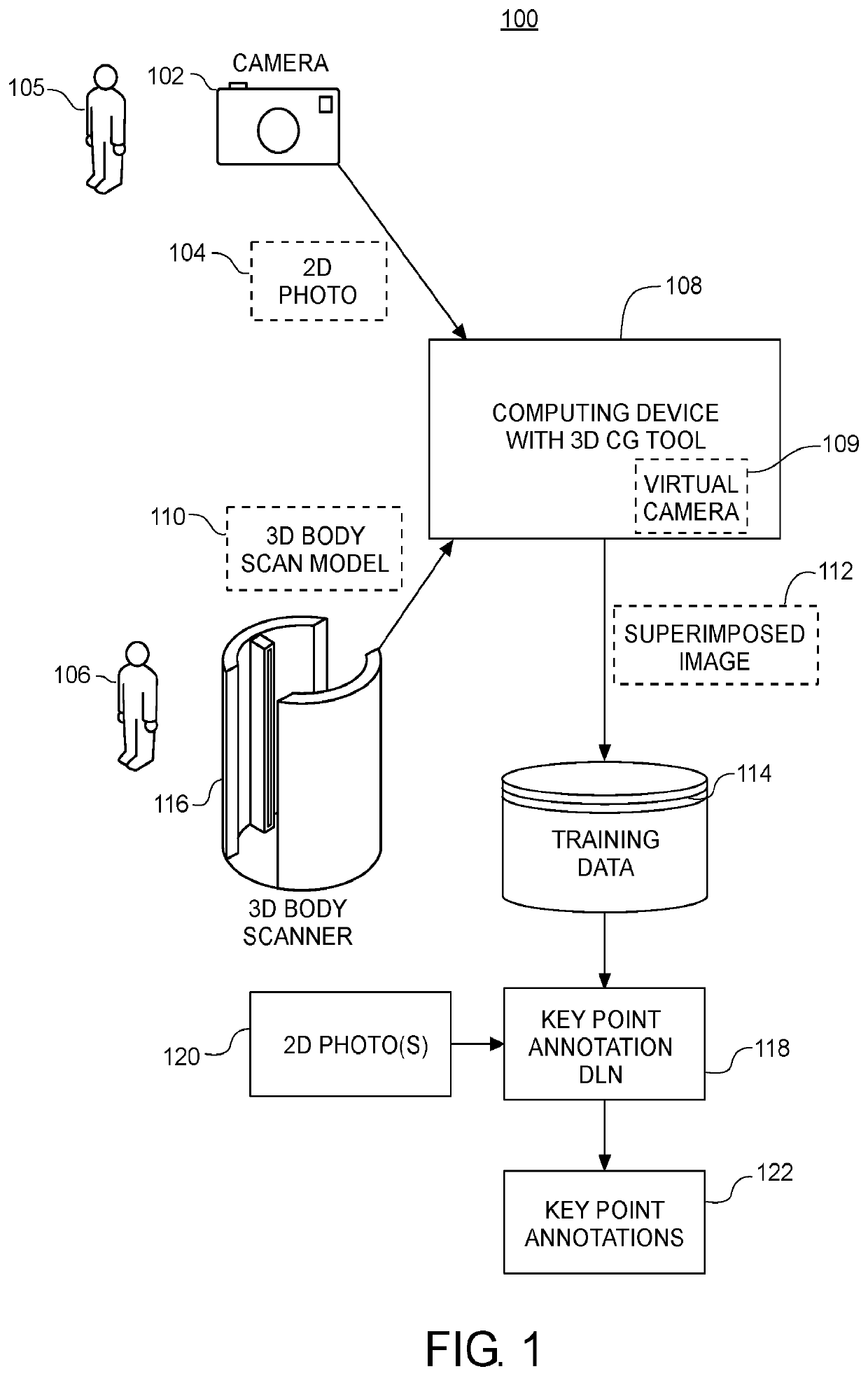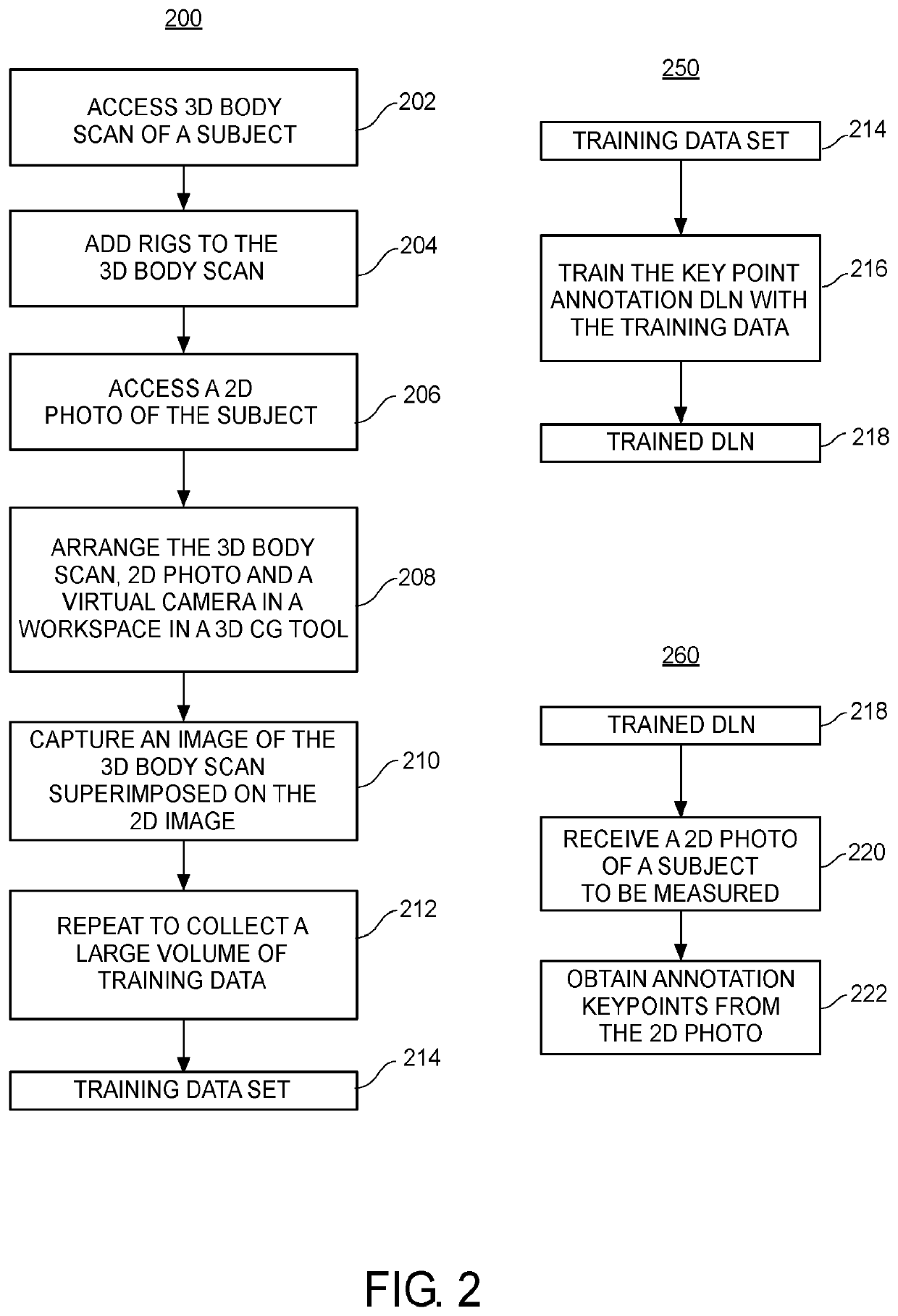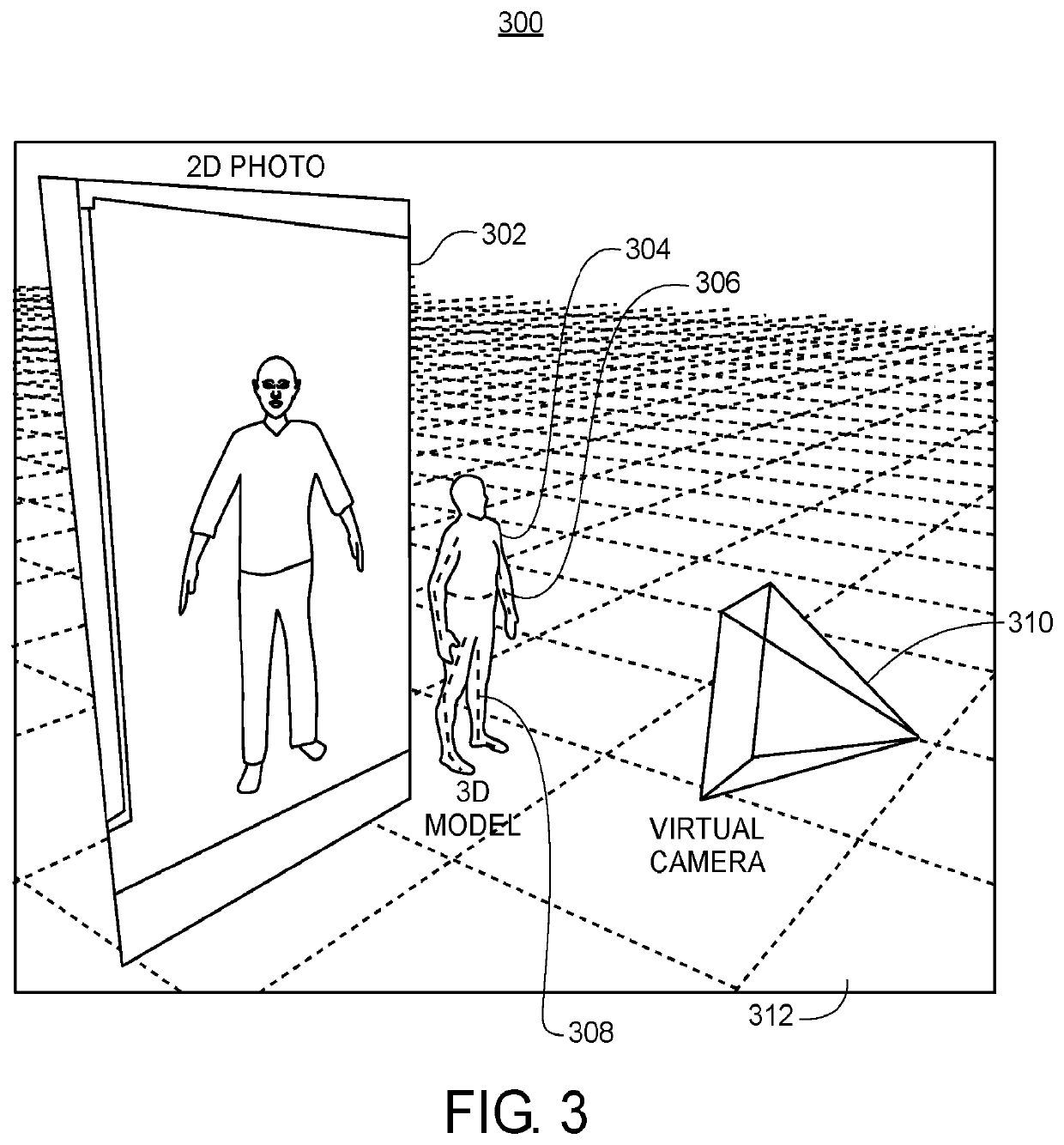Methods and systems for generating 3D datasets to train deep learning networks for measurements estimation
- Summary
- Abstract
- Description
- Claims
- Application Information
AI Technical Summary
Benefits of technology
Problems solved by technology
Method used
Image
Examples
example use cases
of the Present Invention
[0201]FIG. 28 is an illustrative diagram 2800 of a use case of the present invention in which a single camera on a mobile device 2802 is used to capture human body measurements, showing a front view of a human in typical clothing standing against a normal background. In illustrative diagram 2800, the mobile device 2802 has a display 2804, which displays a human figure. In one embodiment, the human figure torso is identified by, for example, dotted lines 2806, body segments are identified by, for example, solid lines 2808. The top of the head is identified by, for example, a first circular dot 2810, and the bottom of the feet are identified by, for example, a second circular dot 2812. The mobile device shown in FIG. 28 comprises at least one camera, a processor, a non-transitory storage medium, and a communication link to a server. In one embodiment, the one or more photos of the user's body are transmitted to a server that performs the operations described he...
PUM
 Login to view more
Login to view more Abstract
Description
Claims
Application Information
 Login to view more
Login to view more - R&D Engineer
- R&D Manager
- IP Professional
- Industry Leading Data Capabilities
- Powerful AI technology
- Patent DNA Extraction
Browse by: Latest US Patents, China's latest patents, Technical Efficacy Thesaurus, Application Domain, Technology Topic.
© 2024 PatSnap. All rights reserved.Legal|Privacy policy|Modern Slavery Act Transparency Statement|Sitemap



